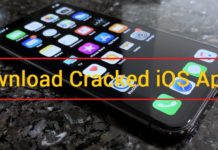Well-developed prospect lists are an essential part of a superior B2B sales strategy. Send emails to irrelevant or uninterested contacts, and you’ll set yourself up for low response rates and wasted resources. Cold outreach is a key part of the B2B sales funnel, no matter how much your sales reps may dislike it.

Research conducted by ValueSelling Associates found that 48% of B2B salespeople were afraid of making cold calls. While some degree of nervousness is normal, outright fear indicates a pattern of poor list-building and outreach processes. If you’re confident that you’re reaching out to someone who is pre-qualified to stand to benefit from your products, then you’re already ahead.
Here’s how you can build a relevant cold outreach list that will minimize negative feedback and fill your pipeline with highly targeted prospects.
Define Your Ideal Prospect
A prospect is someone who will likely benefit from using your solution or service. Sales development representatives often cast a wide net when building prospect lists and reach out to irrelevant people. Instead, the best way to begin is with existing customers.
Look at your best customers’ profiles and identify what drives them to use your solution instead of working with another. Use this data to build a picture of an ideal customer. Variables such as company size, their most pressing needs, their focus market, and their industry or niche are examples of where you should focus.
Analyze your best customers for commonalities as well. B2B lead generation can be simplified by using a platform that gathers all relevant data in one place. Verify metrics such as website visits, engagement rates, and technology used to narrow your list down as much as possible.
Once you’ve defined these key attributes, look for prospects who fulfill these criteria. It’s also a good idea to rank prospects by their revenue potential. A prospect working at a large company might generate more sales for you than one working at a company with fewer resources.
Ranking your prospect profiles this way will help you prioritize messaging when the time comes.
Find Decision Makers in Your Target Companies
Finding the decision-maker within your target company is an important part of the B2B outbound process. Often, B2B buyer journeys involve more than one decision-maker, which makes it tough for salespeople to identify a single target to close a deal.
Senior executives often sign off on a purchase, but the decision to move forward with a solution often comes from a level below them. Once again, viewing buying patterns with existing customers offers a clue as to who you need to contact. What is the position of the decision-maker within your current customers’ companies? How senior are they?
How long did they take to complete a purchase? Every salesperson has to provide value to their prospects to succeed. To this end, research the goals your prospective decision-maker is trying to achieve and how they’ll be evaluated by the organization. Look at the obstacles they’re currently facing, and you’ll understand how to tailor your pitch.
Every company has its own buyer journey, but within the B2B sphere, there are some broad commonalities to the decision-making process. Check whether the final decision-maker is the product’s user and how many decision-makers will be involved in the process. The more complex your product is, the more people will be involved.
Prep Your Email
Building a list is one thing, but it’s of no use if your emails bounce off invalid or wrong addresses. Gathering correct contact information is a challenge, and the tools you use will define your probability of success.
Verify a prospect’s email and contact information by comparing it across different tools. Alternatively, use a service provider who can do this for you.
Before sending your email, make sure you warm up your email account. Variables like your reputation (the number of your emails marked as spam), authentication used, verified recipient addresses, and the server you send your emails from make the difference between landing in the Inbox or the Junk folder.
If you’re worried about your emails landing in the wrong folder, consider setting up an alternative domain that you can use solely for cold outreach. For instance, registering your domain with a .com and a .io will give you multiple options to send emails from. If one of those domains gets associated with a low reputation, the other one can still help you execute your outreach.
Personalize Communication
The best cold communication strikes a chord with your prospect, and the only way to do this is to personalize your communication. A few ways to do this is to cite a common contact, refer to a recent media appearance or event, or any other product that might be relevant to your prospect.
Personalization is simple if you’re sending a small volume of emails.
If you’re sending larger quantities of mails, then consider using a CRM tool that helps you customize your emails en masse. You might also want to consider personalizing the content on the landing pages you send people to in your emails’ calls-to-action.
Remember to highlight possible pain points and position your product as the solution.
Research Twice, Send Once
The key to a great cold email is to research as much as you can about your prospect. Get to know them well, and you’ll build a highly targeted list of relevant people.
The deeper you dive into their pain points, the better your value proposition will be. Spend time personalizing your emails, and you’ll fill your pipeline with great leads.



